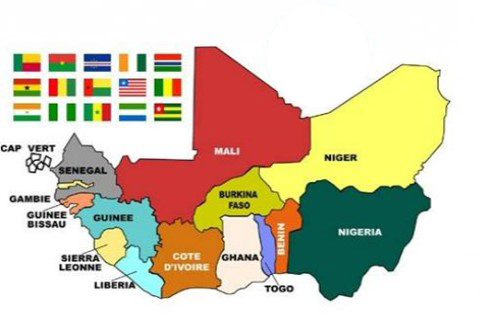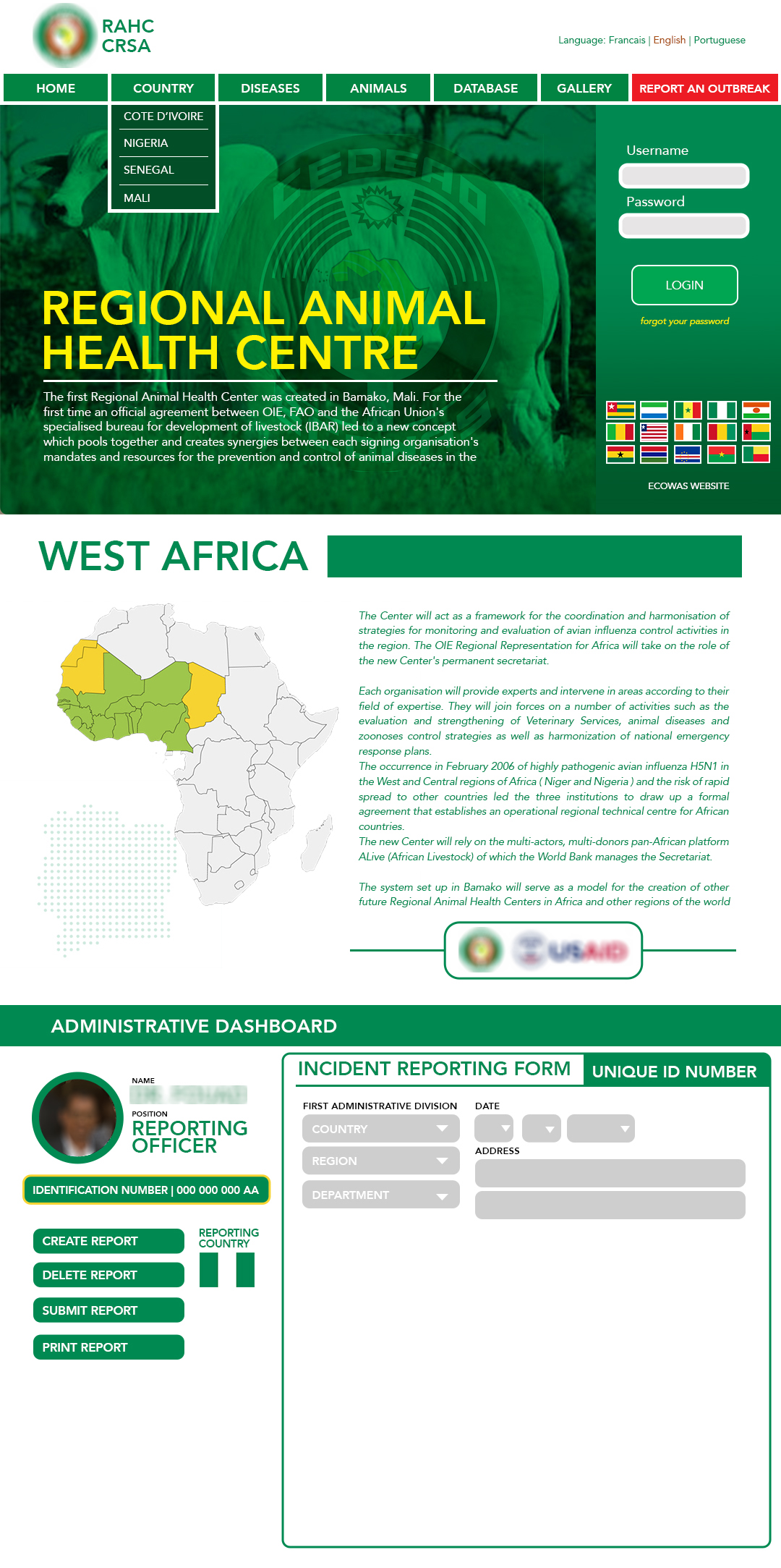
A team of seven consultants (three epidemiologists, one quantitative population ecologist, and three computer analysts) designed a database for Transboundary disease surveillance of Zoonotic diseases in ECOWAS member states. My task was to design and prototype the database front end and website interface and simulate the incidence reporting model.

Defining Problem Area
The seasonal emergence of infectious disease that can be transmitted between animals and humans is proof of the interconnectedness of the ecosystem, human health, and animals; as a result, there is an identified need to monitor and manage the spread of such diseases within the ECOWAS subregion. The Regional Animal Health is the most effective point of call for setting up such a control structure therefore requiring a multidisciplinary coordinated and collaborative approach to tackling all risks surrounding animal-human-ecosystem interface.

Research confirms that close to 75% of emerging diseases affecting humans between 2008 and 2018 were caused by pathogens from animals or animal originating products. In response to this, it is pertinent to develop and deploy a structure to:
taking cognizance of humans, animals, and the environment, as well as wildlife reservoirs and vectors.
An easily accessible and usable computerized database at the national and regional levels of member states and organization that can be linked to already existing international databases for documenting current information on diseases and relevant environmental data associated with such diseases in West Africa was created. The system would function in such a way that once an incidence is reported, all relevant information pertaining to the incidence such as strain of disease, coordinates, number of infected animals, control measures observed etc would be submitted by the reporting agent and the incidence would be escalated through the channel of administration. The reporting state would be placed on red alert with all border states placed on amber alert. Simultaneously, the required control protocol would be initiated and executed by supervising officers.
The specific objectives are to:
- Brainstorm on existing available regional data with respect to zoonosis diseases in West Africa.
- Design and suggest tools that will enable the development and implementation of effective strategies for the prevention and zoonosis control.
- Create regional disease database in web format that will be remotely accessible as key tool for Transboundary disease surveillance and investigation of outbreaks.
- Harmonize data management among the different country and Develop a monitoring strategy.
- Develop a user manual for training.

At the end of all the workshops and technical sessions, a regional disease database for transboundary disease surveillance and outbreak investigation was created and put forward for adoption in phases across the member states. A harmonized regional disease data management system was also set up as well as a disease database user training manual was developed.